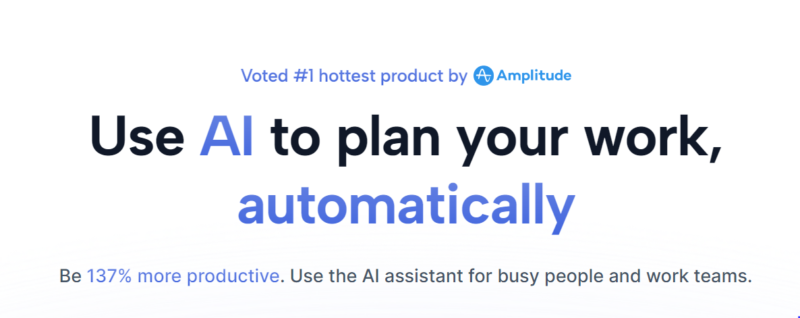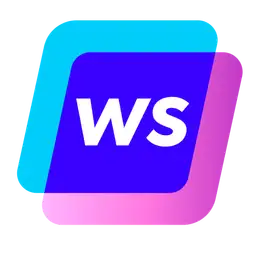Motion Review:
Motion is a task and time management tool designed to help professionals optimize their workday by automating scheduling and prioritization tasks. Aimed at boosting productivity, Motion is particularly suited for busy professionals, freelancers, and anyone juggling multiple projects or tasks. It stands out by not only organizing tasks but also dynamically scheduling them into your calendar.
Table of Contents
Motion Features
Motion’s main features revolve around its advanced algorithmic approach to scheduling and task management. The tool integrates directly with your calendar (Google Calendar, for example) to automatically plan your day. It takes into account your meetings, preferred work hours, and task priorities to create an optimal daily schedule. Motion also provides task management functionalities, allowing users to set deadlines, prioritize tasks, and track progress all within the app. Additionally, it offers analytics to review productivity patterns and adjust strategies for better time management. The tool’s intelligent notification system alerts you when to switch tasks based on priority and time constraints, making your workflow smoother and more efficient.
Motion Key Features
- Smart Scheduling: Motion uses AI to automatically plan your day. It takes into account your tasks, meetings, and personal preferences to create an optimal schedule that maximizes productivity and reduces downtime.
- Calendar Integration: The platform integrates seamlessly with popular calendar services like Google Calendar, allowing it to automatically sync your scheduled tasks and meetings. This ensures that all your commitments are centralized in one place.
- Task Prioritization: Users can input tasks into Motion, and the tool will prioritize and schedule them based on deadlines, estimated time commitments, and personal work habits.
- Meeting Planning: Motion helps manage and optimize your meeting schedule. It can suggest optimal times for meetings based on your availability and priorities, helping to avoid back-to-back bookings and ensuring you have time for focused work.
- Real-time Adjustments: The tool adapts to real-time changes in your schedule. If a task takes longer than expected or if a meeting is canceled, Motion will rearrange your schedule on the fly, maintaining productivity without overloading your day.
- Analytics: Motion provides analytics on how you spend your time, offering insights into your work patterns and productivity. This data can help you make informed adjustments to your habits and workflow.
- Focus Sessions: The platform can block out periods for deep work, minimizing distractions and helping you focus on high-priority tasks without interruptions.
- Collaboration: For teams, Motion allows you to see colleagues’ availability and coordinate schedules for group tasks and meetings, enhancing team efficiency and collaboration.

Motion Pros & Cons
Pros:
- Dynamic Scheduling: Motion’s unique feature of dynamically scheduling tasks into your calendar helps maximize productivity without manual planning.
- Seamless Integration: Easily integrates with existing calendars, making it straightforward to start using without disrupting existing workflows.
- Data-Driven Insights: Offers valuable insights into how you spend your time, which can help refine productivity strategies over time.
Cons:
- Learning Curve: The algorithm-driven scheduling might take some getting used to and requires initial setup time to accurately reflect your working habits and preferences.
- Limited to Google Calendar: Currently, integration is primarily optimized for Google Calendar, which might be limiting for users of other calendar services.
- Cost: While effective, Motion is priced at a premium compared to some basic task management tools, which might be a deterrent for individual users or small teams.
User Experience
Using Motion has significantly streamlined how I manage my day. Setting it up took some effort, particularly fine-tuning how the tool interprets my task priorities and scheduling preferences. However, once configured, it effectively took over the planning of my workdays, intelligently fitting tasks around fixed appointments. The transition between tasks prompted by Motion’s notifications helped maintain focus and productivity. The user interface is clean and intuitive, although mastering all of its features and trusting its automated scheduling required some adjustment.
Motion Pricing
Motion offers a subscription-based pricing model. While there isn’t a free version, they do provide a free trial that allows potential users to explore the full range of features before committing. The subscription is priced on the higher end for task management tools, reflecting its advanced algorithmic capabilities and targeted professional audience. For those who find significant value in automated scheduling and detailed productivity analytics, the cost can be justified as an investment in enhanced efficiency.

Community and Customer Support
Motion’s customer support is responsive and helpful, with support channels available directly through the app and via email. The company also maintains a comprehensive FAQ section and a series of tutorials which are particularly useful for new users getting acquainted with the tool’s functionalities. Although Motion’s user community is not as large or active as some longer-established productivity platforms, the quality of support and resources provided compensates for this, ensuring users can maximize their use of the tool effectively.
Integration and Compatibility
Motion specializes in seamless integration, particularly with Google Calendar, which is central to its functionality. This integration allows Motion to dynamically schedule and manage tasks directly within a user’s existing calendar setup, ensuring that all appointments and scheduled tasks are synchronized in real time. While currently optimized for Google Calendar, this focus means that users of other calendar systems may not experience the full benefits of Motion’s capabilities unless they switch or sync their schedules through Google. This tight integration with Google services ensures that Motion can offer robust scheduling features, but it also means that its utility is somewhat dependent on the Google ecosystem, potentially limiting its use for those embedded in other productivity platforms.

Motion Target Audience
- Busy Professionals: Individuals in roles that require balancing numerous meetings, tasks, and projects throughout the day, such as consultants, managers, and executives.
- Freelancers and Consultants: Independent professionals who need to efficiently manage their time across different clients and projects without the support of a corporate structure.
- Startup Teams: Small startup teams that need to optimize their time and resources as they grow their business, ensuring that every hour is used as effectively as possible.
- Productivity Enthusiasts: Individuals who are keen on maximizing personal productivity and wish to optimize their daily workflow through automation and data-driven insights.
- Tech-Savvy Users: Those who are comfortable with technology and are looking for advanced, automated solutions to integrate into their digital workflow, particularly those already using Google services.
- Academics and Researchers: Professionals in academic and research settings who must balance teaching, administrative duties, and research projects.
- Remote Workers: Individuals who work from home or in remote teams and need tools to self-manage their tasks and time effectively, especially in unsupervised environments.
Final Thoughts
Motion stands out as a cutting-edge tool designed to revolutionize how professionals manage their time and tasks. With its robust integration with Google Calendar and advanced algorithmic scheduling, Motion offers a unique solution for anyone looking to optimize their workday without the hassle of manual planning. Its ability to dynamically fit tasks around fixed appointments and provide actionable insights into productivity makes it an invaluable asset for busy professionals across various sectors.
While the platform’s focus on Google Calendar integration may limit its appeal to users outside this ecosystem, its specialized features cater well to those who already operate within Google’s suite of tools. The initial setup and adjustment period is a small investment in time that pays off by significantly enhancing daily productivity and reducing the cognitive load of task management.
For professionals seeking a smarter way to handle their schedules, prioritize tasks, and make the most of every workday, Motion offers a powerful solution that combines technology with practicality. Whether you are a freelancer juggling multiple clients, a busy executive trying to optimize your time, or a startup team striving to streamline operations, Motion provides the tools to achieve a more organized and productive work life.





